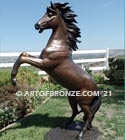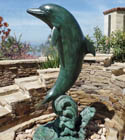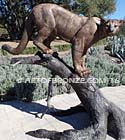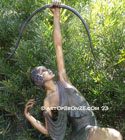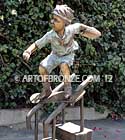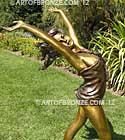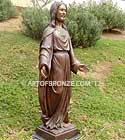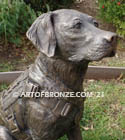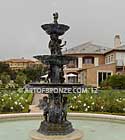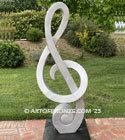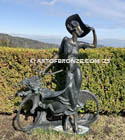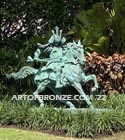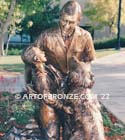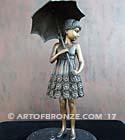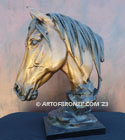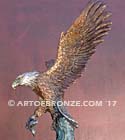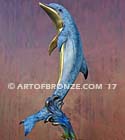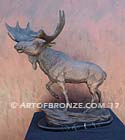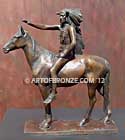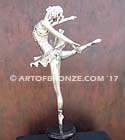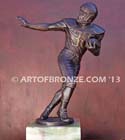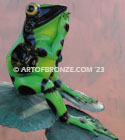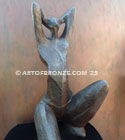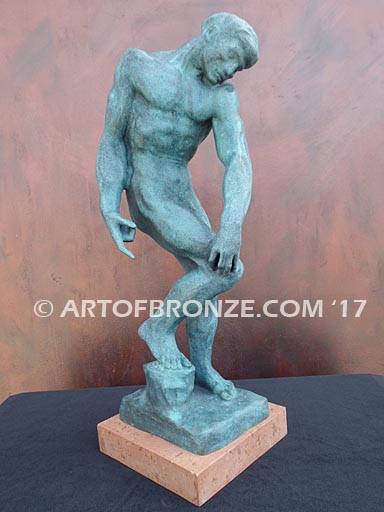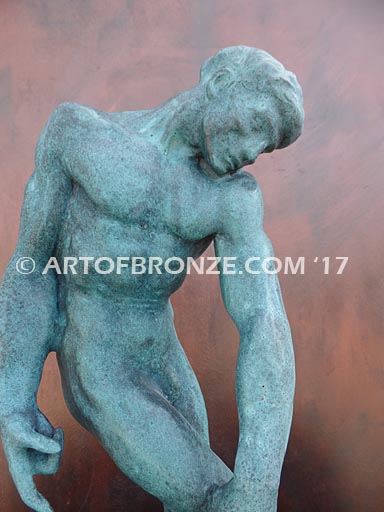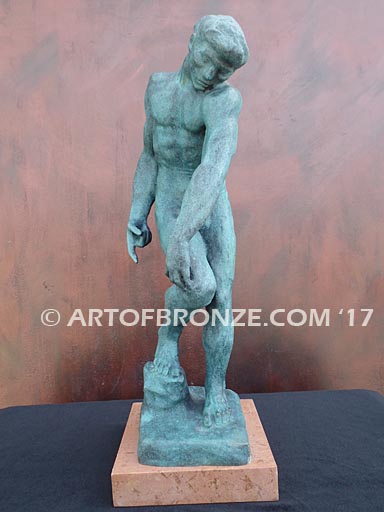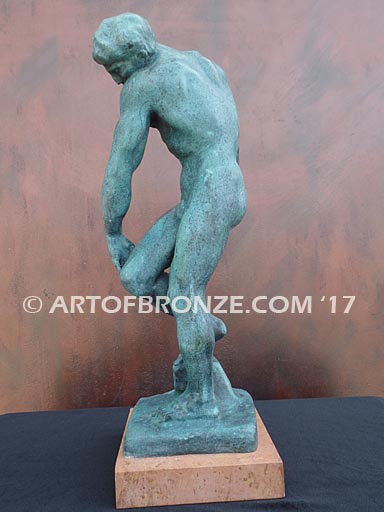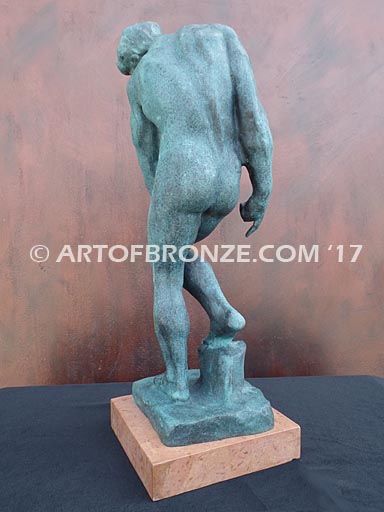Art of Bronze is proud to offer this powerful bronze statue reproduction of Auguste Rodin’s – Adam. This sculpture captures a fascinating interplay between strength and torment. It invites viewers to contemplate the complexity of human existence and the earthly struggles inherent in the human condition.
In 1881, Auguste Rodin received a significant commission from the Ministry of Fine Arts to create two imposing figures, Adam and Eve, for a project that envisioned placing them on either side of The Gates of Hell. This inspired arrangement bore resemblance to the positioning of Michelangelo’s Slaves, which flanked the entrance of the Palazzo Stanga in the Louvre.
For the creation of Adam, Rodin likely repurposed an existing work, showcasing it at the Salon of 1881 under the title “The Creation of Man.” The title itself and the pose of this monumental figure bear witness to the profound influence of Michelangelo’s masterpieces, particularly the renowned depiction of Adam on the ceiling of the Sistine Chapel (1508-1512).
Rodin’s Adam exhibits a well-defined musculature, conveying a sense of immense physical strength. However, the pose chosen introduces an element of the bizarre, evoking the image of a tormented being. With a pointed finger directed towards the ground, Rodin’s Adam seems to accentuate his earthly ties, a departure from Michelangelo’s portrayal, where man is depicted at the moment of receiving the divine spark of life from God.
Rodin is known for his ability to forgo realism and decoration in favor of using texture, surface details, and light and shadow to convey emotion. His focus on inner emotion and suffering is a turning point in the history of art and serves as a hallmark of Modernism.
Auguste Rodin (1840 – 1917) French Sculptor, born in Paris in 184, died in Meudon in 1917. He is considered one of the prominent sculptors of the modern era. His statues St. John the Baptist Preaching, Eve, The Age of Bronze, and The Thinker are world famous. Rodin died on Nov. 17, 1917, and was buried at Meudon. When Rodin was 76 years old he gave the French government the entire collection of his own works and other art objects he had acquired. They occupy the Hotel Biron in Paris as the Musee Rodin and are still placed as Rodin set them. He played a pivotal role in redefining sculpture in the late nineteenth century, both excelling at and transcending the academic Beaux-Arts tradition. His work redefined sculpture. Possessing an ability to organize a complex, turbulent, deeply pocketed surface, he set himself apart from the predominant figure sculpture tradition of the time. Rodin’s most notable sculptures were roundly criticized during his lifetime. A pose might be considered too informal; the lack of a traditional theme found wanting; the exactness of his forms too real; or the “unfinishedness” of his surfaces disrespectful.

